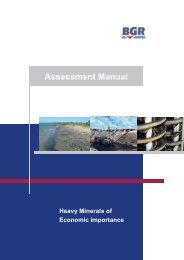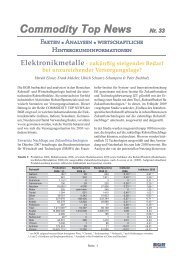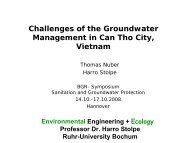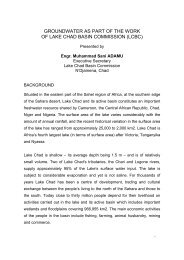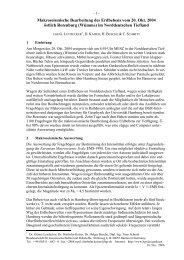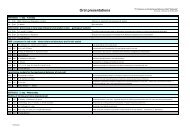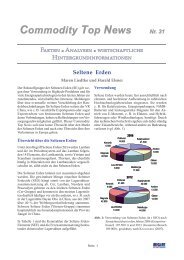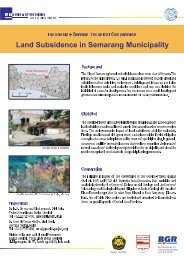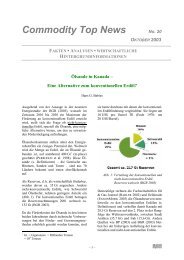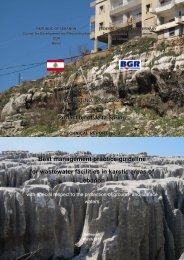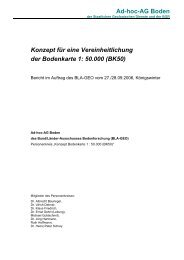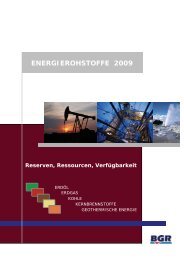THE SMOOTH SOUNDING GRAPH. A Manual for Field Work ... - BGR
THE SMOOTH SOUNDING GRAPH. A Manual for Field Work ... - BGR
THE SMOOTH SOUNDING GRAPH. A Manual for Field Work ... - BGR
You also want an ePaper? Increase the reach of your titles
YUMPU automatically turns print PDFs into web optimized ePapers that Google loves.
2.2.8. Insulation and leakage current<br />
48<br />
The insulation presents one of the most important problems in geoelec-<br />
trics. In the following quite real case we may use 200V direct voltage <strong>for</strong><br />
the power supply of the electrodes A and B. Between the potential elec-<br />
trodes M and N approximately 2mV are assumed to be measured. In this<br />
example the voltage ratio would be 100 000:1.<br />
One could have the opinion, that a sounding curve is susceptible against<br />
leakage current, when the first layer has a perfect conductivity. That is<br />
however a wrong thinking. The poorer the conductivity of the first layer is<br />
the more susceptible is a curve against leakage current. Another paradox?<br />
We have to study this fact in detail.<br />
From chapter 1 we know that the in<strong>for</strong>mation about the resistivity distri-<br />
bution in the layered underground is reflected to the earth's surface by<br />
the current density j "below our feet" between the potential electrodes M<br />
and N. As we cannot measure j directly we do it by recording the voltage<br />
U between M and N using the <strong>for</strong>mula from chapter 1.3:<br />
U = j ρ<br />
(11)<br />
a<br />
From this voltage U the apparent resistivity is calculated after <strong>for</strong>mula<br />
(13) given in chapter 1.4:<br />
We now compare two cases<br />
U<br />
a K<br />
I<br />
= ρ (13)<br />
I. high resistivity of the surface layer: ρ1 (I) =10 000 Ωm<br />
II. low resistivity of the surface layer : ρ1 (II) = 10 Ωm<br />
We now assume that our measurements are carried out by using the<br />
same current intensity I and that this current I creates by leakage any-<br />
where outside or inside the instrument an additional current density j’<br />
between M and N. This means that this j’ will keep its value if there is no<br />
change in I.<br />
Taking into account this "disturbing" j’ we have to write <strong>for</strong>mula (11) in<br />
the <strong>for</strong>m<br />
U =<br />
( j + j')<br />
ρ<br />
a<br />
1



